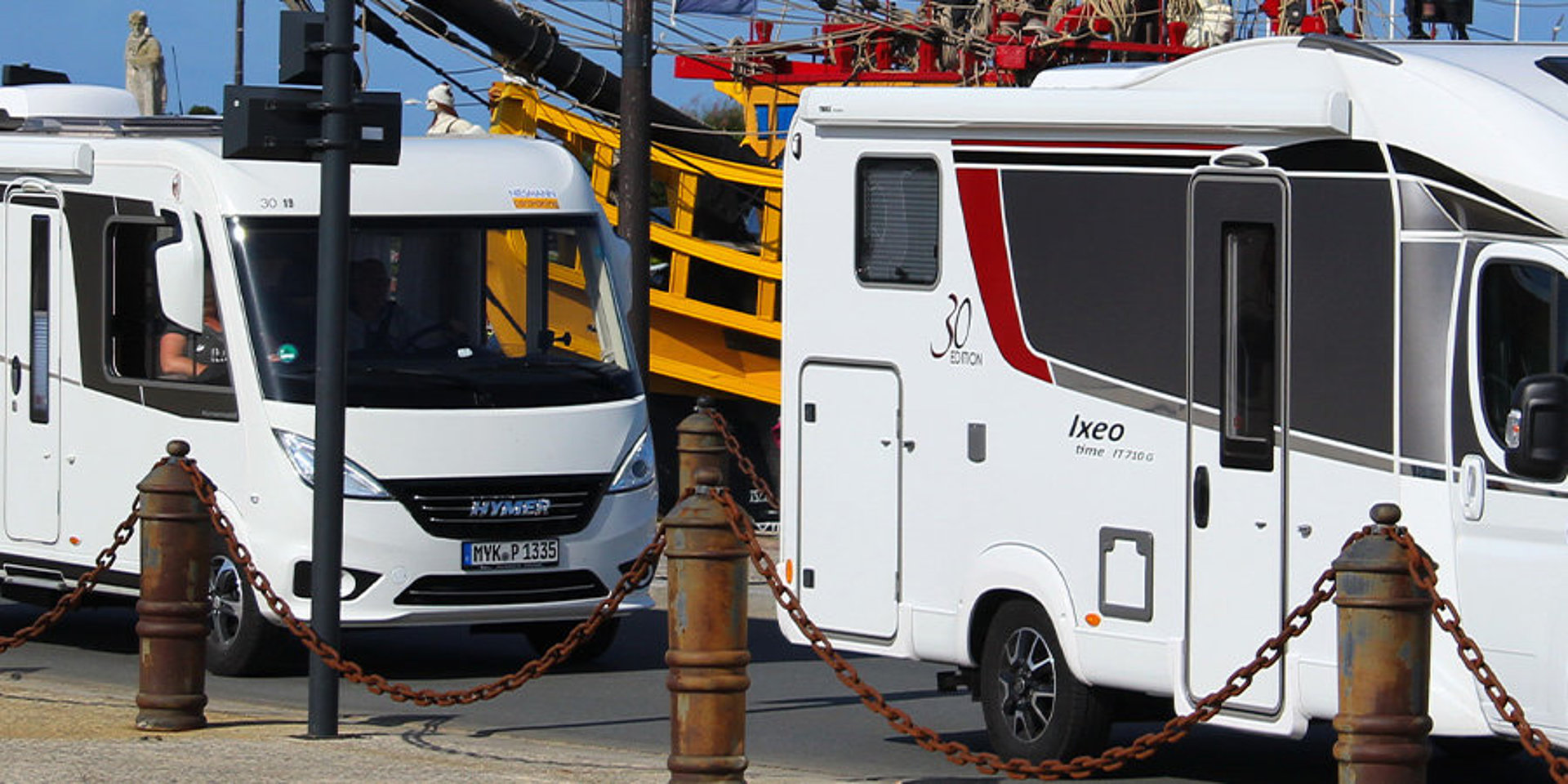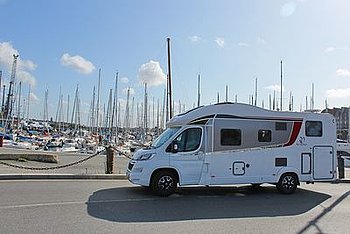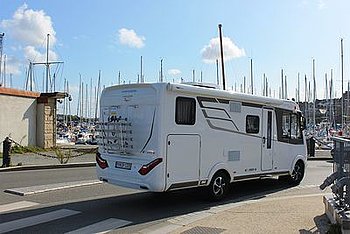Mont-Saint-Michel has always been the border between Normandy and Brittany, and countless generations have argued about which region it belongs to. From its touristic importance it is good for both and we drive quite impressed by the fact that this place could preserve its beauty despite the millions of tourists, further west, to Saint Malo. Here we have now finally arrived with the camper in Brittany and this is heard and read everywhere.
Brittany is a part of France, where one must inevitably think of its two most famous representatives: Asterix and Obelix. Aremorica, as a part of Brittany was called in Roman times, was, as we know, characterized by the indomitability of its inhabitants, and it has remained so to this day.
The Breton folk pride meets the visitor at every corner, the Gaelic language has made it to traffic and place name signs and the cuisine with its wonderful mixture of sweet and salty is worth a trip alone. Saint Malo consists of an old town surrounded by a city wall and a surrounding area that is not particularly worth seeing.
Saint Malo's location made it an important port city early on, and even today, not only do the car ferries to the Channel Islands leave here, but goods from all over the world pile up in the harbor area. Very close to the walled old town we find a motorhome parking lot, which is not exactly inviting for an overnight stay (although some mobiles also stay here overnight), but which is ideally located as a starting point for a sightseeing tour of the city.
When you enter the old town through the large gates, you immediately notice that the time of the Corsairs in Saint Malo continues to this day. Nowadays, travelers are no longer robbed so blatantly and they are allowed to keep their lives, but if you look at the prices in the countless restaurants and souvenir stores, you will see that not too much has changed since then.
The picturesque town is nevertheless worth a visit. Of course, such a visit makes you hungry and then we stop at a restaurant - which is a stroke of luck. The "Gallo" is a crêperie and is apparently run by a family. The tiny place is served exclusively by the lady of the house, while the men are busy preparing crêpes and galettes. "Galettes" are the savory relatives of the sweet egg dish; they are made with buckwheat flour and filled with all sorts of goodies.
To our table, the chef brings a galette with ham and Breton camembert and one with scallops in parsley butter. A poem! The "sweet" fraction enjoys crêpes with chestnut cream or the typical Breton variant with salted caramel. Our next trip takes us to the sea, which is omnipresent here. The inhabitants of the city have a long sandy beach right on their doorstep, something to be truly envied.
We plan to spend the night at a campsite in a suburb of Saint Malo, which is located on a small headland. From it we have a fantastic view into the harbor and can see the ferries setting off towards the Channel Islands. The site is already almost in winter dormancy, the sanitary facilities are closed, but we don't mind because we have fully functional bathrooms on board our motorhomes.
Gratefully, we take advantage of the electricity, although we could well have managed three days with the battery power of our motorhome, and after a short rest we go in search of a place where we can eat dinner.
On the way here through narrow alleys we passed, among other things, a promising-looking bistro. Before we go there for dinner, we get ready for the city and use the ingenious construction in the bathroom. In just a few steps, the bathroom with sink can be transformed into a shower, which, thanks to the heating, provides pleasantly warm water for showering. After driver and navigator have washed off the dirt of the day, our way leads us to the bistro and we spend a decidedly "tasty" evening with a chef who has apparently already caught the eye of Michelin restaurant critics.
After we have showered so extensively, it is time for a "water change". The tanks of the camper for water and sewage hold more than 100 liters, but at some point they are exhausted. At the same time we want to clean the toilet. At almost every campground, but also in many cities, there are disposal points for the so-called "gray water". This refers to rinse and wash water. The removal and supply is very simple. The camper is navigated over the drain and the drain is unblocked. Then the water flows off unimpeded and quickly. After the waste water tank is empty, the fresh water tank can be easily refilled. There is even a watering can for particularly difficult situations, but we never needed it.
Toilet cleaning is really no longer a problem thanks to modern technology. The cassette with the waste water can be pulled out of the side of the camper and is firmly closed like a trolley. At the points provided for this purpose, you can simply loosen the drainage pipe cover and dispose of the contents of the cassette. Then rinse thoroughly with the water hose available on site and close again. To prevent the contents of the cassette from becoming odorous over time, sanitary tabs are used for decomposition. After emptying, they are placed in the toilet and flushed into the container with a little water. Thus prepared disposal is really a piece of cake!




